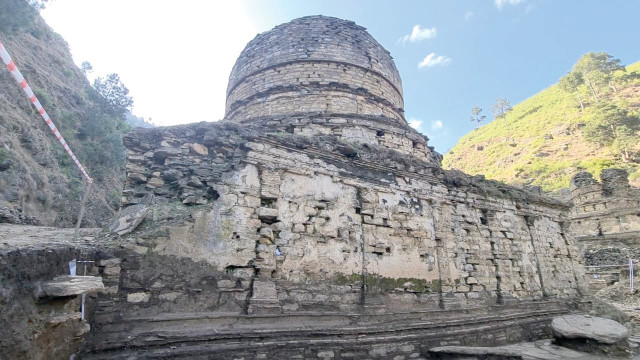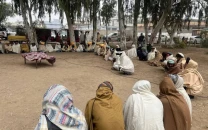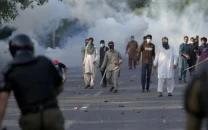Kushan-era Buddhist site found
A unique stupa with two towers has also been unearthed in Swat

Archeologists have unearthed a large Buddhist complex in the Najigram area of Swat district of K-P province dating back to the Kushan era and is believed to be an important archeological finding.
It is the largest complex of its kind found so far in the region and is estimated to be at least 2,000 years old having a resemblance with the Kushan-era architecture.
The excavation was first started in the area during 1930s by Italian experts but they soon abandoned the project due to limited resources. In 1955 another Italian mission visited the site and declared it very important and large in size.
The complex is located around 25 kilometers away from Mingora city in Aabba Sahib Cheena village in Najigram area.
A vihara has also been unearthed which is a stupa with two minarets or towers. Utensils have been found made of clay but not burnt in an oven.
Talking to The Express Tribune archeologist Dr Ashrarf said that during the excavation a trove has been discovered as the complex is huge by all means stretching in an area of four to six kilometers but they had started initial excavation on 94 kanals.
“This is the only Buddhist site discovered so far which has four stupas located in one area, a huge hall, dwelling units, and a monastery. There are chapels that have Buddhist statues in it,” Dr Ashraf said.
“The importance of the site has been recorded in scores of historical journals like East and West Journal published from Rome and in the writings of famous archeologists of Italy,” he said.
“It was first discovered in 1930s and in December 2020 we started work on it again and we are astonished to see the outcome,” he said.
Field officer Saqib Razaq told The Express Tribune that a survey was carried out in the first phase and then the excavation of the site began. It looks like the biggest Buddhist site of its kind in Pakistan.
“We have hired locals for excavation and preservation of the artifacts and the process is a time-consuming one because you have to clean and sort out the artifacts found. Preserving the unearthed site is also a laborious job,” he said.
“The government and the Archeology Department have provided us with all the necessary resources for the purpose. The site will soon be opened for the general public,” he said, adding that there were 150 Buddhist sites across Malakand Division which could attract a lot of faith tourism if developed and managed properly.
Locals also demanded of the government to promote the archaeological sites in the region in order to attract tourism.
Published in The Express Tribune, February 8th, 2021.



















COMMENTS
Comments are moderated and generally will be posted if they are on-topic and not abusive.
For more information, please see our Comments FAQ